Survey on Tsunami Awareness in Sri Lanka
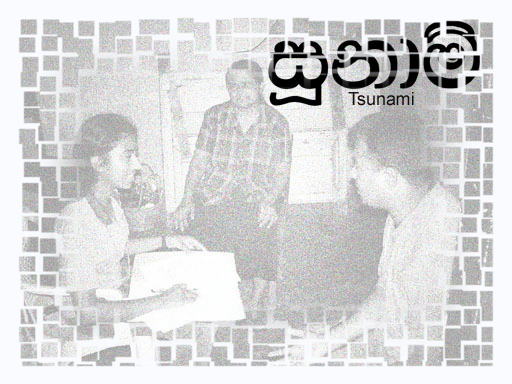
1. Summary of the Survey
1. 1 Objectives
The purposes of this research are as follows:・to assess and evaluate current situation and community's capacity to respond to natural disasters, and
・to propose a strategy for dissemination of tsunami knowledge and to raise public awareness regarding Tsunami disaster.
1. 2 Target area

1. 3 Period of field survey
From 2nd March 2005 to 12nd March 20051. 4 Sample and Disatribution




1. 5 Survey methodology
Differrent methodologies have been adopted to collect data from distinctive target groups as follows.- Residents : Questionnaires followed completely by an interview
- School children : Questionnaires filled under the instructions of a teacher
- Government officers : Questionnaires filled independently by respondents themselves
* Interviews were conducted with school principals, head of government officers to get further clarifications on certain matters.
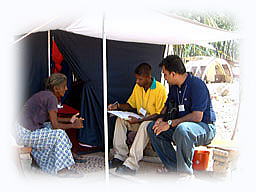
9_11.jpg)
1. 6 Contents of questionnaire
*Residents: |
reaction at the occurrence of Tsunami, information during evacuation, knowledge about tsunami, countermeasures against natural disasters, etc. |
|---|
*School children: |
awareness of natural disasters, knowledge about tsunami, communication within the family on natural disasters |
|---|
*Teachers: |
curriculum to study natural disasters, educational materials |
|---|
*Government officers: |
training/seminar for natural disasters, countermeasures against natural disasters, potential sources and information channel |
|---|
2. Results of the Survey
2.1 Residents
Number of samples: 1,324Q. What was your reaction at the occurrence of Tsunami?
(1) When I saw the sea level dropped,
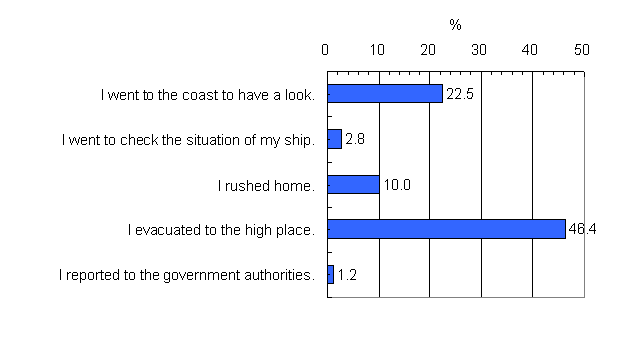
(2) When I saw the waves approaching to the coast line,
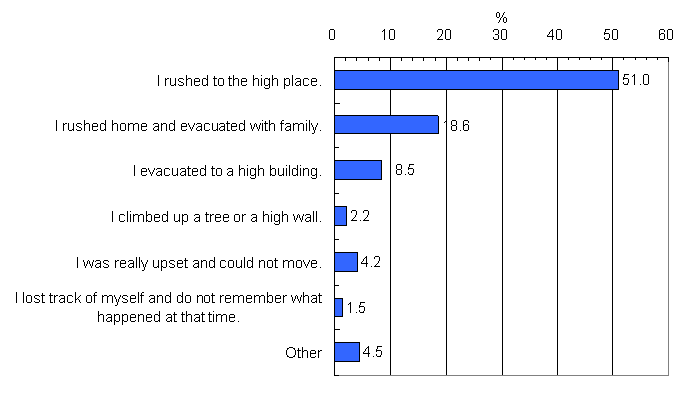
(3) When I saw the waves approached to my house or toward me,
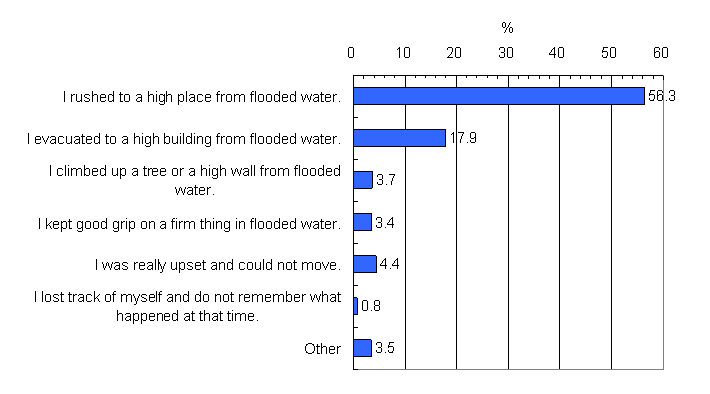
| Comment: As per the respondent's comments, a significant number of people rushed to sea to have a look as the sea level dropped may be due to their lack of knowledge on earthquake related incidents. |
Q. What triggered your decision to evacuate?
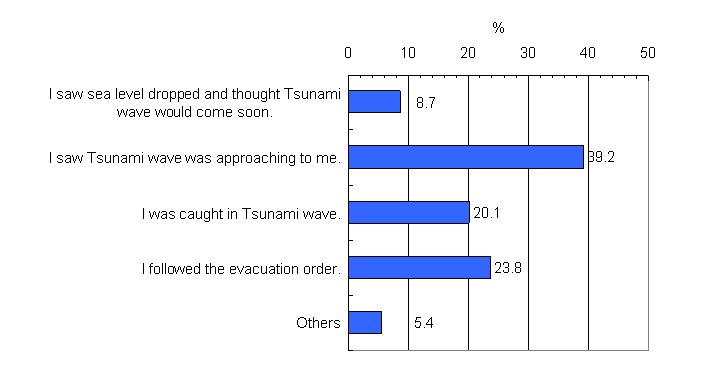
| Comment: Many people evacuated when the Tsunami struck, while only a few escaped as the sea level dropped. |
Q. How did you escape from the wave?
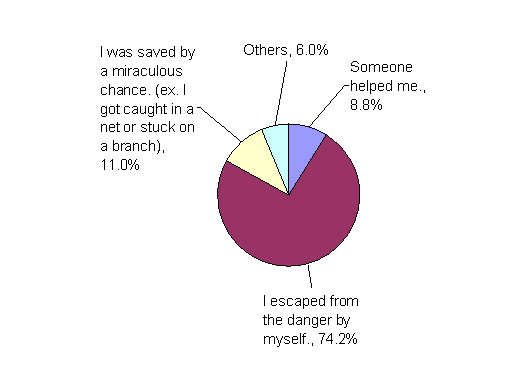
Q. How did you hear the news on Tsunami?
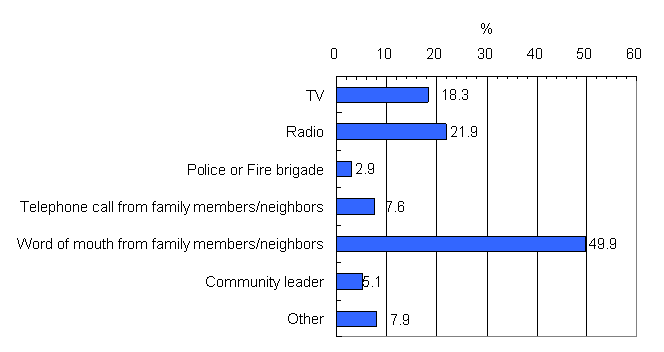
Q. How did you get the information on the rescue and relief during the first week after the Tsunami occurrence?
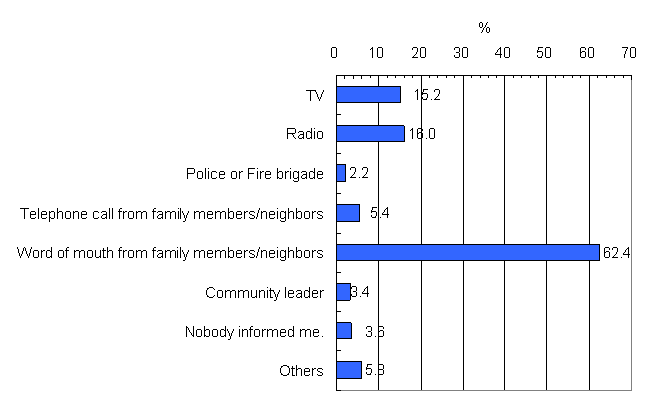
| Comment: Informal communication channels seem to be more effective than mass media. |
Q. What kinds of the information did you want to know most during the first week after the Tsunami occurrence?
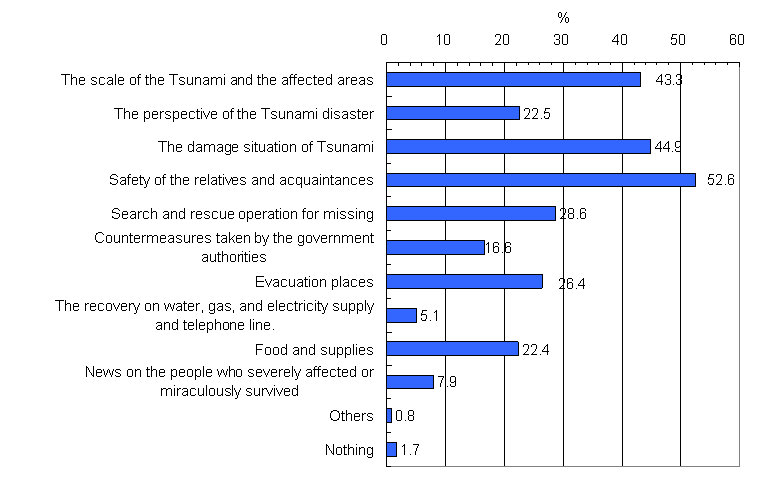
| Comment: People were most worried about the safety of their family as expected, while the second serious concern is for the scale and damage of the disaster hitting the area, more than those for aid supplies and shelters. People were less concerned about rehabilitation of utilities such as electricity, gas and water supply. |
Q. Which mode most cater the above needs?
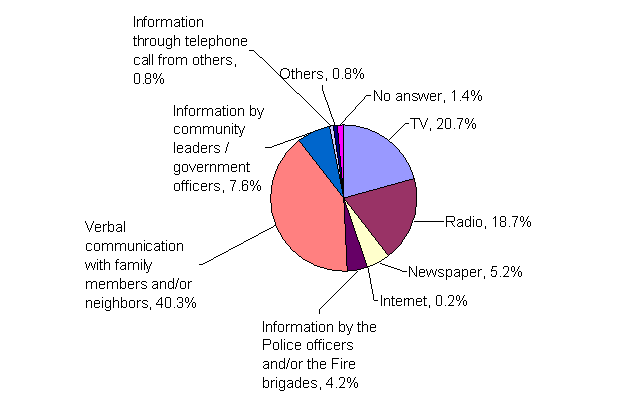
| Comment: People obtained information more from the family or neighbors verbally than from the Media reports. This result suggests the relationships among people in communities is important in a time of disaster. Careful identification of these relationship patterns might create a foundation to have awareness programs in more efficient and effective way in the future. |
Q. Have you heard about Tsunami before the disaster?

Q. If you had known more about Tsunami, do you think you could have reduced the damage in the affected area?
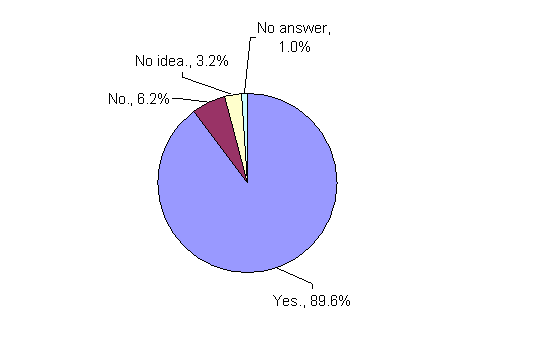
| Comment: The above result indicates the importance of awareness on natural disaster in minimizing possible losses. |
Q. What is most effective way to utilize the lessons for preventing/mitigating a tragedy from recurring?
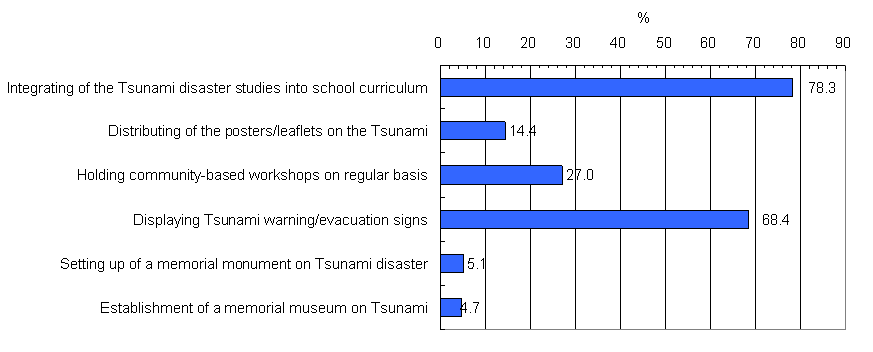
| Comment: Striking results shows that disaster education in schools most effective. Displaying tsunami warning / evacuation signs received many votes, which is supposedly based on their experiences of evacuation. |
Q. What kinds of countermeasures should be taken for reducing the future damage by Tsunami?
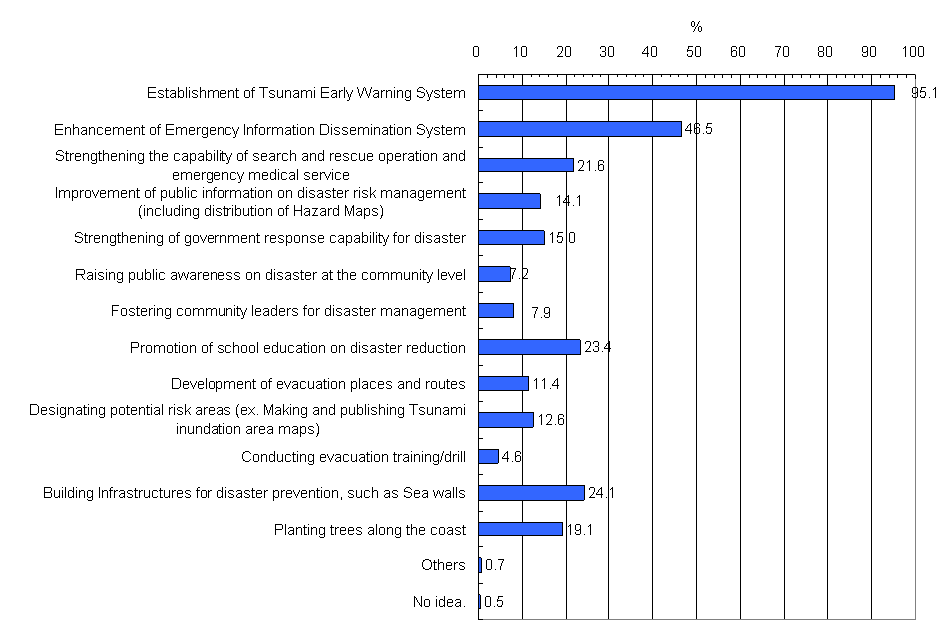
< Characteristics of the survey samples>
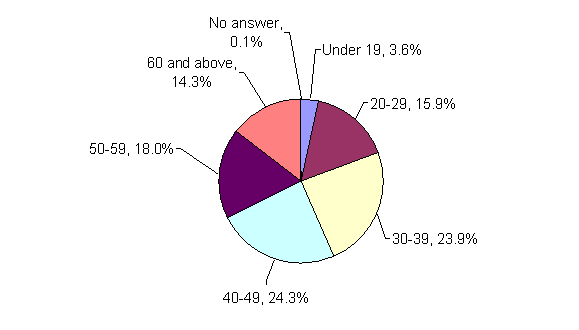
・Gender
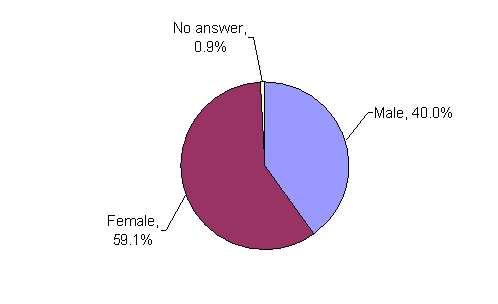
・Occupation
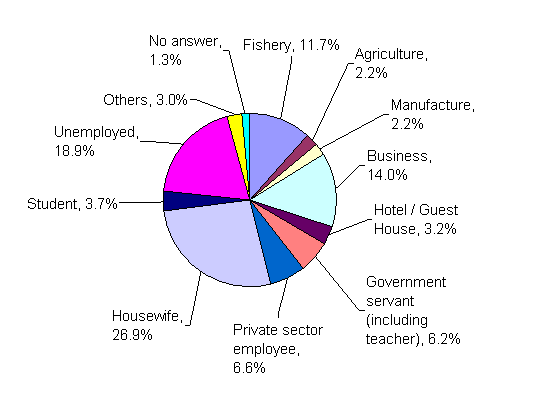
2.2 Schools
(1) School childrenNumber of samples: 1,112
Q. Have you ever studied about natural disasters such as floods, landslides, earthquakes and tsunamis before?
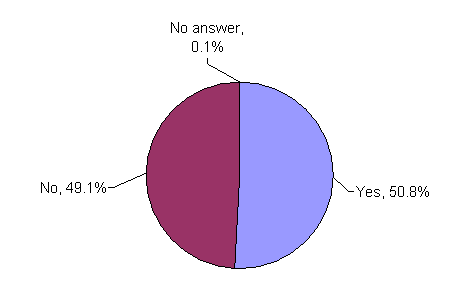
| Comment: Full-fledged disaster education in schools is not introduced. |
Q. Would you like to study about natural disasters such as floods, landslides, earthquakes and tsunamis in the future?
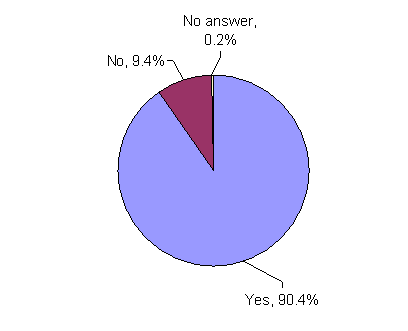
| Comment: The above result indicates that children are now highly concerned with natural disasters. It is revealed that children to study on natural disaster aroused with the experiences of Tsunami. |
Q. Do you know the cause of a Tsunami?
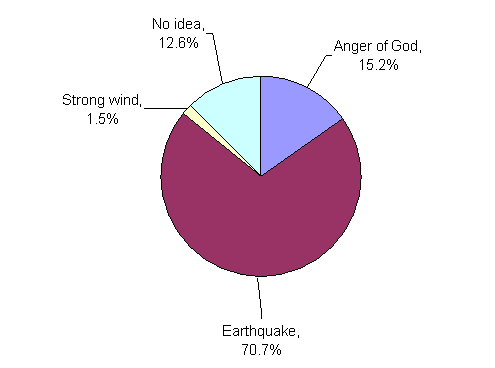
| Comment: A considerable number of children do not understand what causes a tsunami, even shortly after the occurrence. This illustrates that disaster education is important. |
Q. What do you do in an event of a sudden big sea drop?
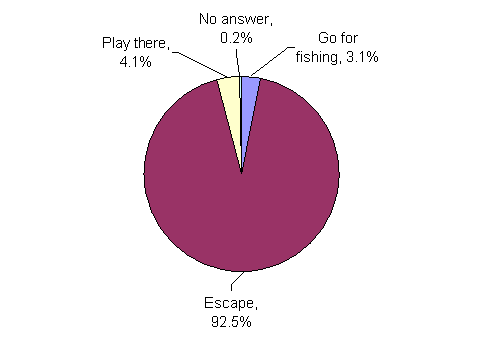
| Comment: Nearly all the children know what to do when the sea level drops. |
Q. Have you studied how to escape from a natural disaster either at school or home?
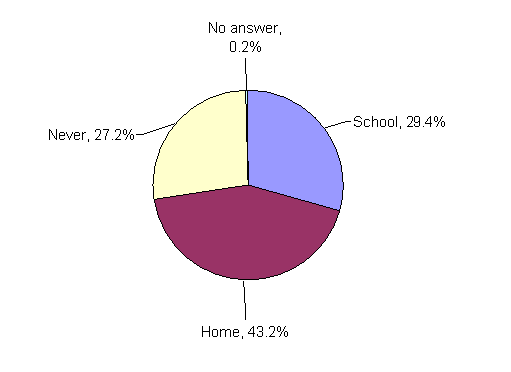
| Comment: The above result shows that disaster education in schools is insufficient, which underlines a urgent need for formal introduction of a curriculum including subjects for learning about disaster reduction. |
Q. Do you discuss what you have learnt in the school with your family at home?
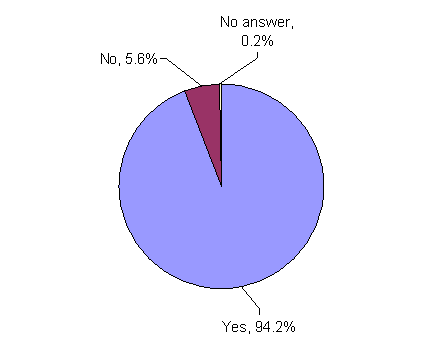
| Comment: It is expected that disaster education in schools will educate adults as well in an indirect way. |
(2) Class teachers
Number of samples: 36
Q. Do you have subjects for learning about natural disasters in the curriculum? If yes, do you think that they are effective for disaster reduction (or to reduce human losses)?
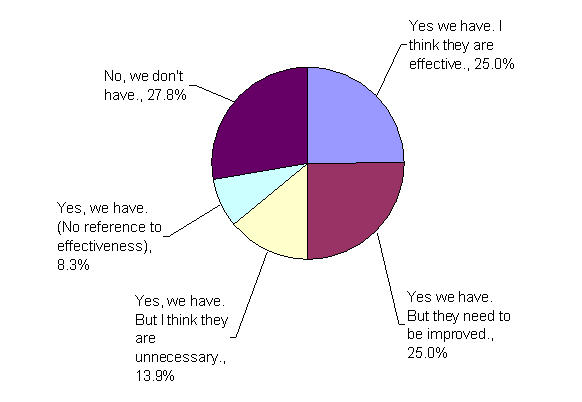
| Comment: Only a quarter answered that they had a subject for learning about natural disasters which is functioning effectively. |
Q. Do you think which educational material is most effective for disaster education?
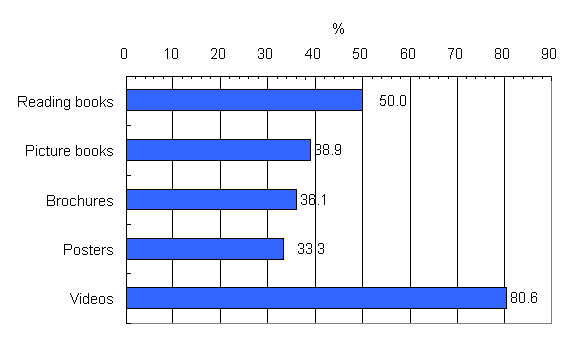
| Comment: A large number of teachers find audio-visual means(videos) do much better in educating children. |
2. 3 Government officers
Number of samples: 110Q. Is there any training/seminar available in your office to study about natural disasters?
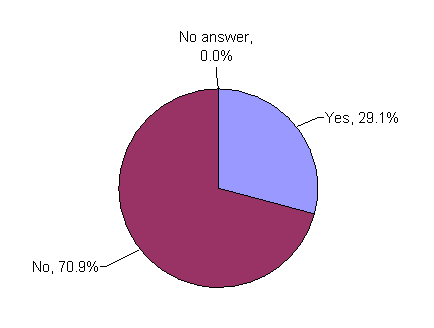
Q. Is there any emergency drill for natural disasters in your office?
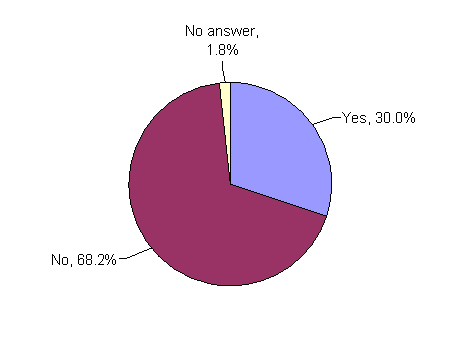
| Comment: Those who answered "yes" to the both questions above are navy personnel and a part of police officers. No training and drills are conducted in other institutions. |
Q. What kinds of countermeasures for natural disasters would be needed in the future?
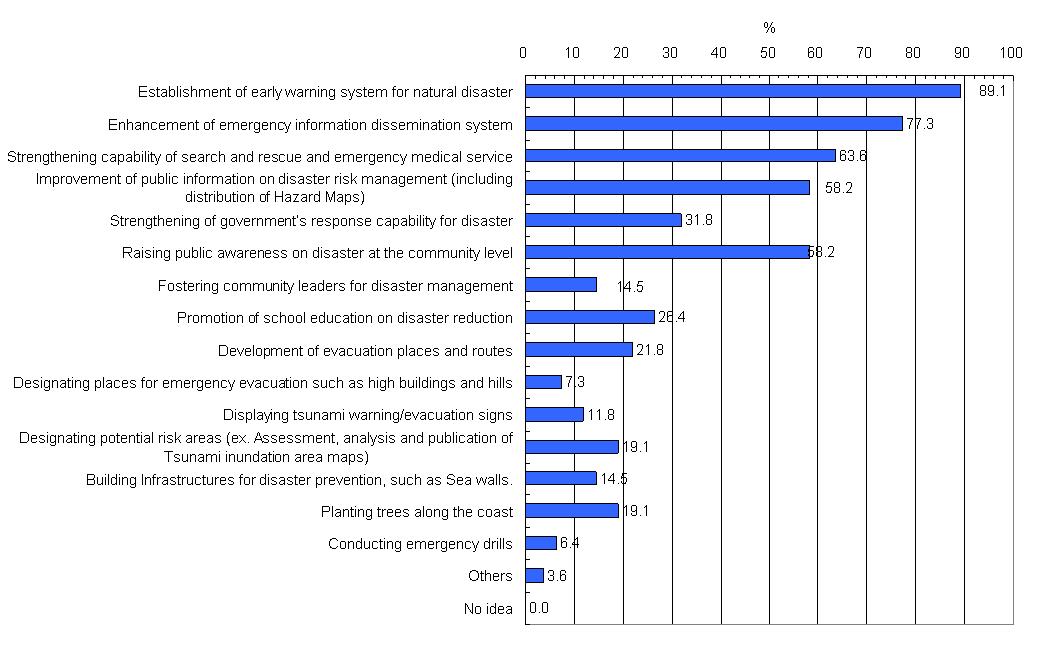
| Comment: Government officials put importance on establishment of early warning system, enhancement of emergency information dissemination system, reinforcement of capability of search & rescue as well as medical service, improvement of public information such as distribution of hazardmaps, and raising public awareness at the community level. The results intuitively emphasize that government officers possess a positive attitude in reducing the impact of disasters in the future. |
Q. What is the most effective way of information dissemination to the residents at an event of disaster?
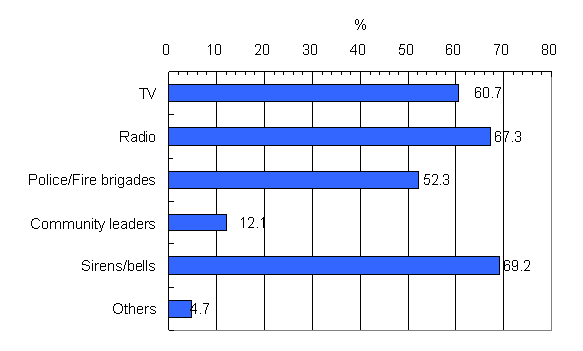
| Comment: Officials think that most effective ways to disseminate information are sirens, radio and TV. |
Q. Do you think the disaster countermeasures for tourists will be needed?
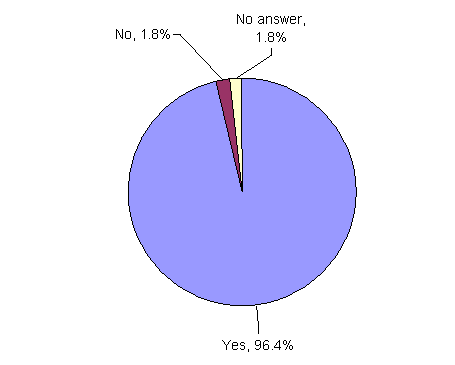
| Comment: A significant number of officials consider countermeasures for tourists as essential since tourism is one of the most important industry in Galle. |
Q. What kind of measure of prevention is most effective for tourists?
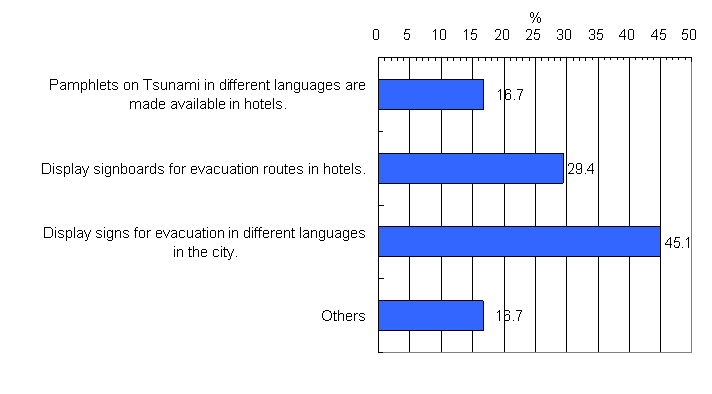
| Comment: Displaying evacuation route signs are considered as most essential. |
2. 4 Summary of results
(1) Residents・ |
While many residents evacuated to a higher place at the occurrence of Tsunami, a certain number of people(23%) went to sea to have a look as the sea level dropped. |
|---|
・ |
94 % of residents have very limited knowledge of a tsunami, and 90 % think that the Tsunami damage could have been reduced if they had known more about it. |
|---|
・ |
The most useful information source soon after the Tsunami was verbal communications with the family or neighbors (40 %), being considered more informative than the Media such as TV (21 %), radio (19 %) and newspapers (5 %). This result suggests that relationships among people in communities is vital as a means of communication. |
|---|
・ |
Many residents answered that the most effective ways to raise public awareness on disaster reducation were education in schools and displaying tsunami warning/evacuation signs. |
|---|
・ |
Residents consider that the following countermeasures should be promoted for disaster reduction: establishment of early warning system for natural disasters (95 %); enhancement of emergency information dissemination system (49 %); building Infrastructures for disaster prevention, such as sea walls (24 %); promotion of school education on disaster reduction (23%), which in turn shows a positive move for an overall disaster management. |
|---|
(2) School children
・ |
49 % of school children responded that they have never learnt about natural disasters, however, 90 % would like to study them, which shows high interest for disaster education, within the students. |
|---|
・ |
The survey revealed that approximately 30 % of children were still ignorant about the cause of a tsunami, while 71 % have properly understood it. This result underlines the dire need of promoting disaster education urgently. |
|---|
・ |
It is expected that disaster education in schools in turn might have a positive impact on educating adults as well, since 94 % of children use to talk with their families what they learnt in the school. |
|---|
(3) Class teachers
・ |
Approximately 1/4 of the teachers answered that they had a well-functioning curriculum including a subject for learning about natural disasters. |
|---|
・ |
Teachers answered that videos (81 %), reading books (50 %) and picture books(39 %) were effective for a education material for disaster reduction. |
|---|
(4) Government officers
・ |
29 % of those surveyed answered that they had training /seminars and drills for natural disasters in their offices, who are navy personnel and a part of police officers. Other 71 % of the general authorities receive no training and drills. |
|---|
・ |
96 % of surveyed officials feel the need to take disaster reduction measures for tourists. Specifically, displaying signs for evacuation in different languages in the city is considered as the most effective way to preserve their security (45 %). |
|---|
・ |
According to the survey results to government officials, disaster reduction measures to be taken are establishment of early warning system for natural disasters (89 %), enhancement of emergency information dissemination system (77 %), and strengthening capability of search and rescue and emergency medical service (58 %), the first three points further strengthen the residents view points on the same. Other essential measures were identified as improvement of public information on disaster risk management including distribution of Hazard Maps (58 %) and raising public awareness on natural disaster at the community level (58 %). |
|---|
・ |
Sirens and bells are considered as the most effective tools to disseminate disaster warning to the residents, followed by TV (61 %) and radio (67 %). |
|---|
3. Situation of Devastated Area

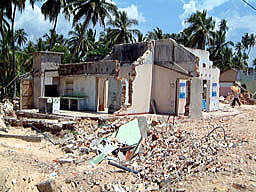
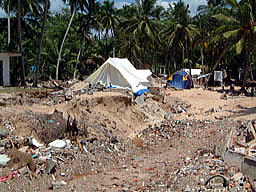
<Acknowledgments>
This survey was conducted as a part of the Urgent Study of the Great Sumatra Earthquake and Tsunami Disaster, offered by Special Coordination Funds for Promoting Science and Technology of the Ministry of Education, Culture, Sports, Science and Technology (MECSST), Japan. We would like to extend our sincere appreciation to the Government of Sri Lanka (National Disaster Management Center, Administrative District of Galle) for their cooperation to implement this survey. We also wish to thank Mr. Edirisihghe, University of Colombo, for his efforts in translating the questionnaire into Sinhalese and in advicing for the survey method, and Mr. Pushpakumara, Eyecom Lanka Consultancy Services, for the coordination of the survey team and supporting their activities in the field.<Copying and reproduction policy>
This report is the outcome of the Urgent Study of the Great Sumatra Earthquake and Tsunami Disaster conducted by the Asian Disaster Reduction Center, as a commissioned survey offered by Special Coordination Funds for Promoting Science and Technology of the Ministry of Education, Culture, Sports, Science and Technology (MECSST), Government of Japan.Copying or reproduction of this report in any form requires permission of the MECSST.

